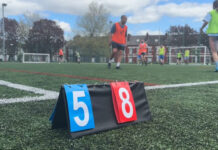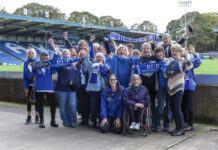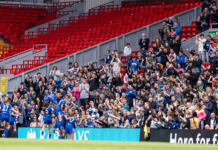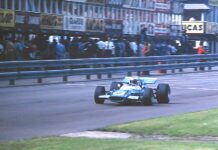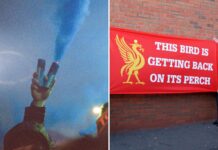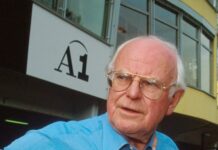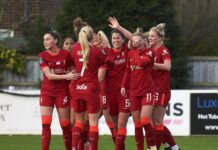The former football league side of New Brighton has been re-established as a Sunday League team with hopes of climbing the football pyramid.
Simon Castell, founder of the Sunday League team New Brighton Town AFC, says “the dream” is to bring league football back to the Merseyside town.
Once boasting a pier to rival Brighton and a Tower ballroom grander than Blackpool, the seaside town of New Brighton has slowly seen its key attractions disappear, including a former football league club.
In 1896, local businessmen decided a football club was needed to sustain tourism in the area during the winter months and founded New Brighton Tower AFC.
Remarkably, for a town of New Brighton’s size, they played their home games in a purpose-built 80,000 capacity stadium called the Tower Grounds which sat adjacent to the newly constructed tower and ballroom.
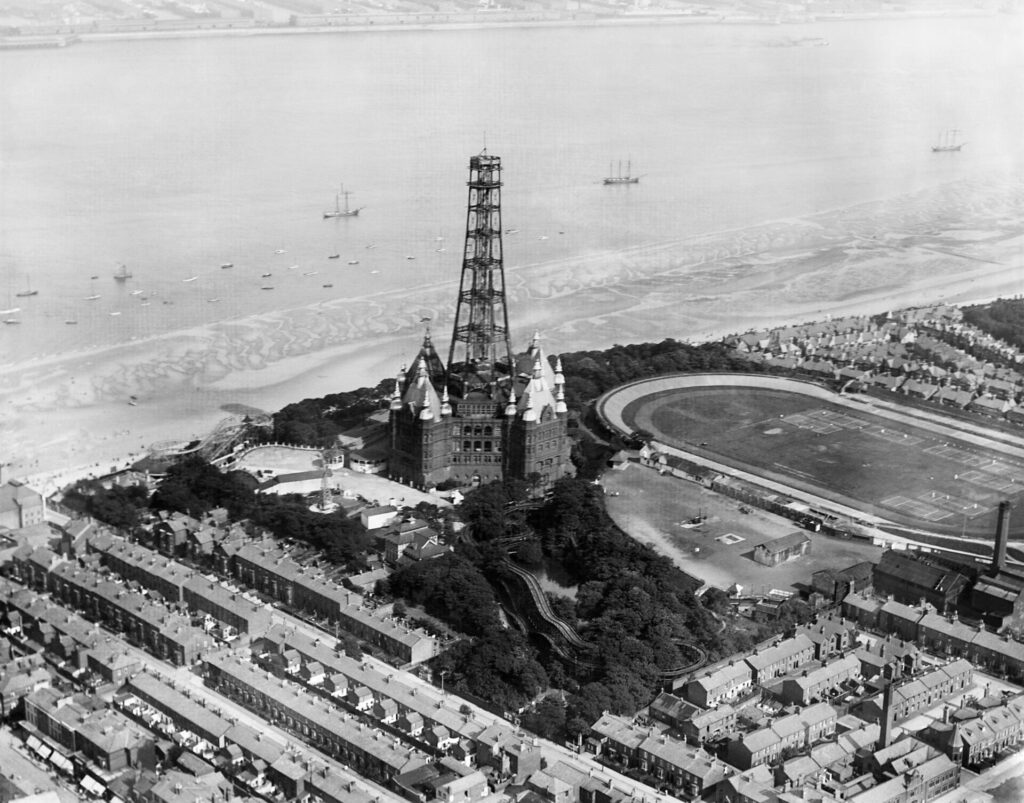
Starting in the second division, the club aimed to buy their way into the first division by acquiring some of the country’s top talents at the time.
Despite a fourth-place finish, the club dissolved in 1901 due to financial difficulties, stemming from poor attendances.
But just twenty years later, league football was back in New Brighton for a second time.
New Brighton AFC were founded to replace the bankrupt South Liverpool side and the club were soon elected to the newly expanded third division north.
By this time, the Tower Grounds had fallen into a state of disarray after the first world war, so the club decided to play their games at the nearby Sandheys Park – although they did return to their original home for a short period after World War Two destroyed their second home.
Whilst their league form never caught the eye, the club did reach the FA cup fourth round on four occasions.
Some footage remains of their cup exploits, including their home victory over Corinthian FC in 1928 and a replay vs Spurs at White Hart Lane ten years later, where they eventually succumbed to a 5-2 defeat.
The club were voted out of division three in 1951 and languished in the regional divisions until disbanding in 1983.
Fast forward to today and nothing remains of the club.
In 1977, the 80,000-capacity stadium was sold to make way for a council estate, whilst it is hard to imagine Sandheys Park was ever there.
Despite attempts to revive the club, New Brighton has not had a serious football team since 2012.
But one man is hoping to change that.

Simon Castell is no stranger to England’s lost football clubs.
Originally from Huddersfield, Simon remembers stumbling across the derelict stadium of Bradford Park Avenue, sparking a lifelong fascination in England’s lost football clubs.
He says this was something that was rekindled when he moved to New Brighton:
“I looked up these football clubs and how suddenly, from having a community that means a lot to people to suddenly disappearing.
“New Brighton amazes me in that it’s let so much go.
“I moved here in 1999 and it was still hanging on to its history, but it was fading”.
When the local businessman was approached to help create a Sunday League team in 2023, there was only one option for the 61-year-old.
Sponsored by Simon’s own communications company, New Brighton Town AFC was founded in 2023.
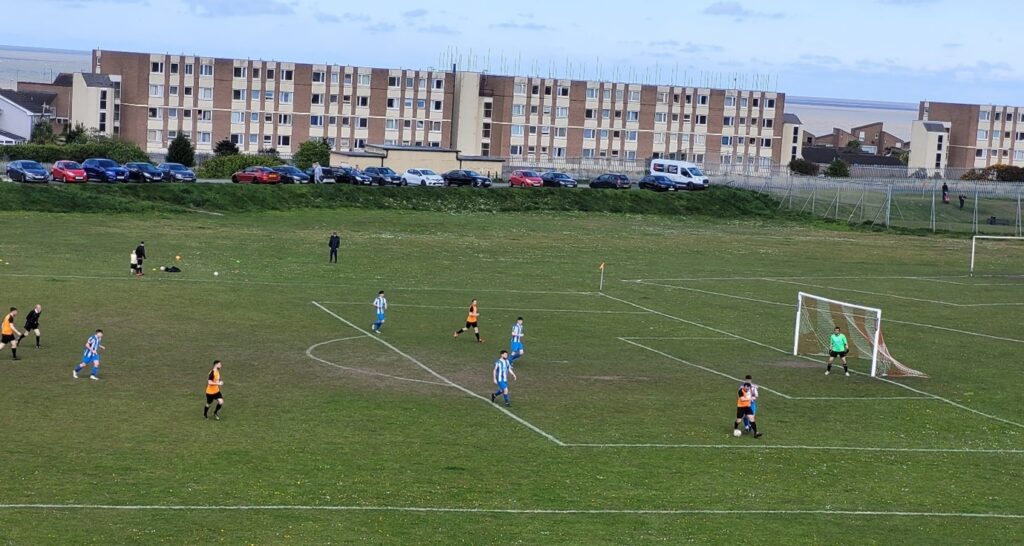
The club have started life in the Wallasey and District Sunday League Division Two, but they do not intend to stay there for long:
“Our short-term target is for New Brighton Town to be playing West Cheshire semi-professional football, whilst longer term we are aiming to bring league football back to New Brighton and compete in the same league as Tranmere Rovers FC.
The ultimate goal, and it probably won’t be in my lifetime, but you know the thought of having New Brighton playing in League Two would be brilliant!”
The Town made a promising start last term, with a cup final appearance and solid mid-table finish. They sit third in the table this season, just one point off the league leaders.
Whilst long-term aspirations are high, Simon is well aware of the difficulties in growing the club’s stature.
“We’re just going to be a Sunday league team to start with but we’re actually promoting ourselves as something a lot bigger.
“We’ve started with pretty much nothing… I can put money in for the shirts and things like that, what we’re really looking for is grants.
“It’s a case of doing it bit by bit, the dream is to get more and more people involved and somehow get kids who are New Brighton fans!”
“It depends on investment, player and everything, I think it’s probably going to take 20 years.”
Top of Mr Castell’s agenda is finding a sustainable home for the club.
Whilst the Tower Grounds stadium was demolished in the 1970s, a football pitch of the same name remains next to the site of the former venue.
But Simon is sceptical of quick return to the club’s spiritual home, given its closeness to the River Mersey:
“The issue is when the lads kick the ball, it would be on the prom!”
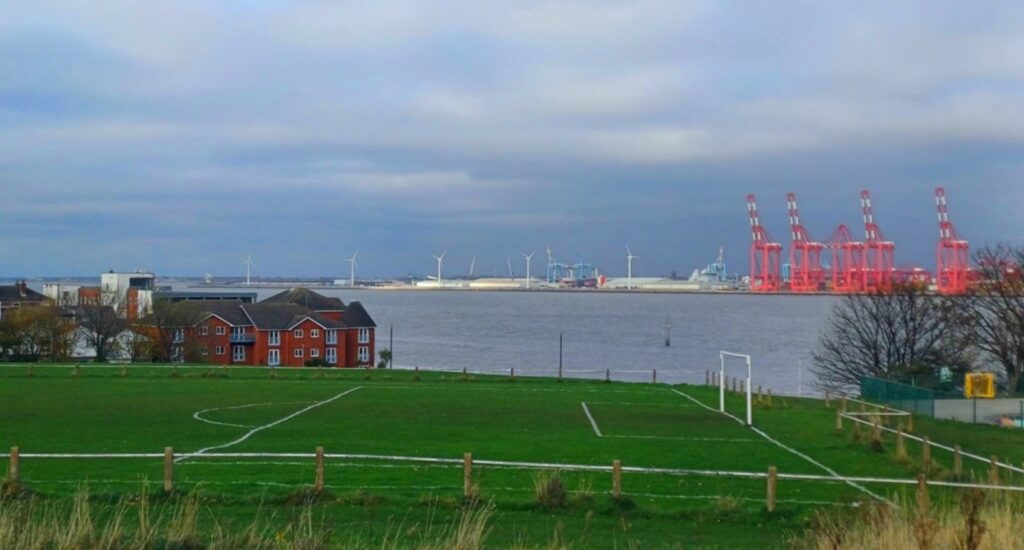
New Brighton would have to climb approximately 10 divisions to reach Tranmere’s level in League Two.
Though such ambition is not without inspiration. A recent example of a club rocketing up the football league ladder is Dorking Wanderers.
Disillusioned by Wimbledon’s fall from grace, Mark White created Wanderers in 1999, who have gone from playing in the park to as high as National League in just 25 years.
“Accrington Stanley, that was just an old-fashioned name of a club that dies long ago, the fact they resurrected themselves, that was a big inspiration,” Simon adds.
However, key to any success is having a fan base to launch success. New Brighton, by contrast, was once the smallest residential area to have a football league representative.
Indeed, Simon is not the first to try and resurrect the club in recent years.
Founded in 1993, another phoenix club reached West Cheshire level before folding in 2012 after struggling to maintain support.
Therefore, key to the success of the latest relaunch will be the reaction from the public, as Simon adds:
“The other big question is, do the people of New Brighton want to see it revived in some capacity. It has to be driven by the whole area. It’s not going to work with the committee that we’ve got. We’ve started it and we need people who are going to get stuck in.”
So far, the reaction has been positive, with many taking to social media to share photos of old memorabilia from the original clubs.
This picture, which hangs in a pub in Wallasey, shows New Brighton in a home game circa 1947 when the Rakers moved to the Tower grounds after Sandheys Park was bombed during the war and the site reclaimed by the council to build houses after the war . pic.twitter.com/IneTtVYQ5l
— New Brighton Town AFC (@NewBrightonAFC) October 22, 2024
The club are aiming to build on this positivity by becoming the heart of the community and plan to offer various charity and social events to support local initiatives, starting with a weekly football sessions for children with additional needs.
The aim is to help create an “equal opportunities community in New Brighton with the club in the middle of it all.”
Above all, Simon wants to create a legacy in New Brighton that goes beyond the football club:
“I don’t want my company name on the shirts for the rest of its existence, as if it’s my team.
“The whole idea is that New Brighton has got to be everyone’s club, not one persons.
“You have to look at the club as separate, it’s a person in itself, it belongs to the people, the fans, whoever they are.”
Unlike the original, the foundations of New Brighton Town AFC look set to be built on community instead of financial gain.
It is a togetherness they are hoping will propel them all the way back to the football league.
Featured image courtesy of New Brighton Town AFC


